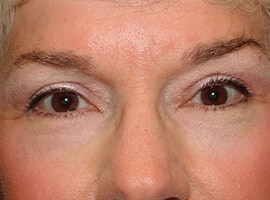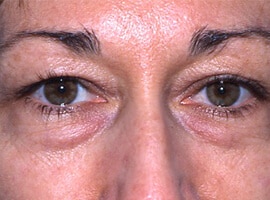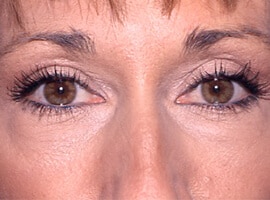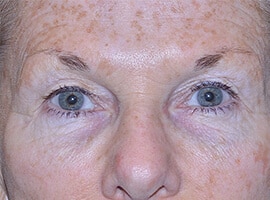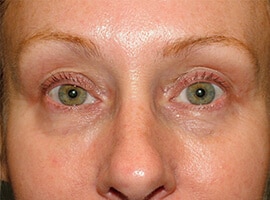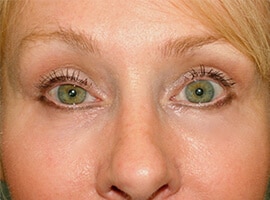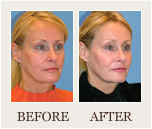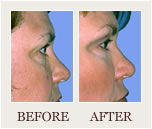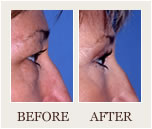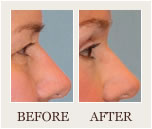All photos are displayed with patient consent.
What is Laser Skin Resurfacing?
Laser skin resurfacing can remove years of aging from the face in a matter of minutes. Chemical peels are often used for sun damage and fine wrinkles, however the laser can address much deeper wrinkles, acne scars and other complexion problems. Ideal laser patients are fair skinned without extreme skin sagging, but with wrinkles and sun or age spots. Laser resurfacing can be done on patients with loose skin, although these patients may benefit from face-lift or other cosmetic procedures.
Laser Skin Resurfacing
CO2 lasers are used for resurfacing and for minimally invasive treatments such as spider veins, facial skin pigmentation, sun damage, and skin tightening. The CO2 Laser is especially effective in treatment of wrinkles of the lower eyelid skin and for treating wrinkles around the mouth.
The CO2 laser is the gold standard for skin tightening and wrinkle reduction, however it has the longest recovery time of up to 2 weeks. The face is very red for the first week and fades to pink for the next week. At 10 to 12 days, you can wear makeup to cover the pinkness. Our office can recommend special make up products to mask the pinkness. Generally, by the third or forth week, the majority of the pinkness is gone and the positive effects of the laser resurfacing can be appreciated. Some patients may stay a very light pink for several months, but this can be covered by make up. Research has shown that the improvement of wrinkles will continue to be seen as the skin continues to heal over the course of 18 months.
How the Laser Works
The CO2 laser is a concentrated beam of light that creates a precision burn on the outer layers of the skin. A single pass with the laser will remove a very thin layer of skin, about the thickness of a human hair. Patients with minimal sun damage or wrinkles may only need a single pass. Patients with advanced sun damage, wrinkles or deep acne scars will need multiple passes. Every patient is different so there is no exact formula for the number of passes.
The actual laser procedure takes about 45 to 60 minutes and usually requires IV sedation. Immediately after the laser surgery, the face will be covered with paper tape or a laser healing cream and cold packs.
Prolonged Redness
After the laser treatment the skin is pink. This can be covered by makeup at about 10-12 days and generally resolves in most patients by 4-6 weeks. Some patients may remain a very light pink for several months but it is always a temporary situation.
Hyperpigmentation
It is not uncommon to have increased pigmentation, which happens about a month after the procedure and can occur in 30-40% of patients. This manifests as blotchy tan areas on the face and is temporary. This happens more frequently to patients that are exposed to sunlight or other forms of irritation such as wind, hair dryers, etc. This is a temporary condition and is easily treated with bleaching creams.
Scarring
Scarring is extremely rare and prudent practitioners are conservative with laser treatment. It is always safe to under treat a patient and perform a touch up later. In fact, patients with significant wrinkling or acne scars may need multiple procedures. Dr. Joseph recommends waiting 12 weeks before retreating an area with the laser.
Touch-up Treatment
Many patients are completely treated with a single laser procedure, but for some cases such as extreme wrinkles, a touch up treatment may be required.
Face and Neck Demarcation
Damaged skin is darker than undamaged skin. The outer surface of your forearm is darker than the under surface because of sun exposure over the years. When the face is lasered, the new skin will be lighter because it is healthier. There is often a demarcation between the lasered skin of the face and the non-lasered skin of the neck. Dr. Joseph will treat specific anatomic areas of the face and feather them to blend the light and dark areas. One transition area where the laser stops is intentionally hidden in the jaw line.



